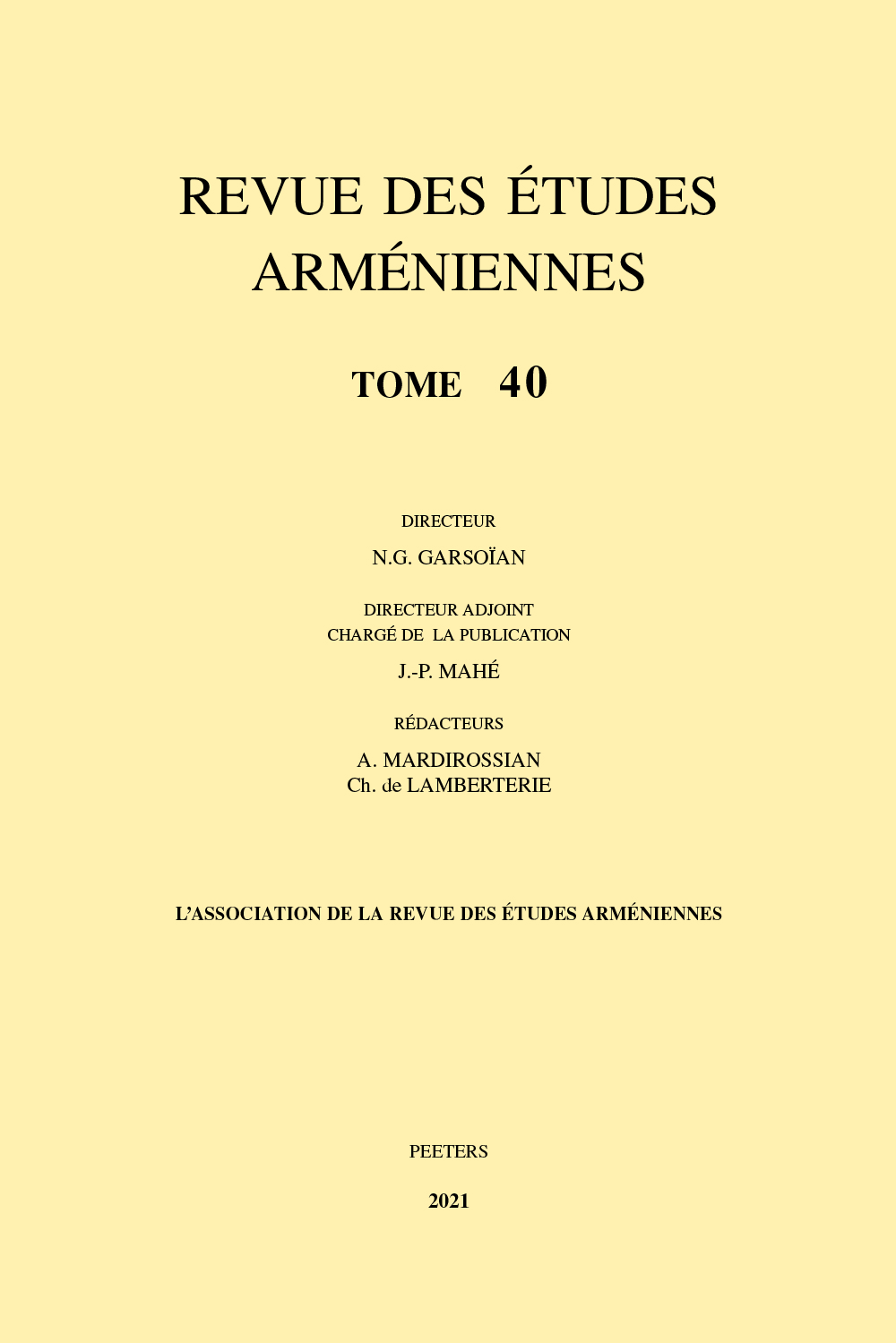 previous article in this issue previous article in this issue | next article in this issue  |

Preview first page |
Document Details : Title: Some Aspects of Historical Time and Narrative Fiction in the History of the Armenians by Movsēs Xorenac'i Subtitle: A Conceptual Perspective Author(s): STEPANYAN, Albert A. Journal: Revue des Études Arméniennes Volume: 41 Date: 2022 Pages: 97-139 DOI: 10.2143/REA.41.0.3291881 Abstract : In early Armenian historiography, the History of the Armenians by Movsēs Xorenac‘i is the only holistic work, pursuing the purpose of covering the Armenian past from the formative period to the fifth century. For this unprecedented purpose, he used numerous and of different character sources: Classical and Hellenistic, biblical and Christian authors while combining their information with those of Armenian folklore and professional writers. Three aspects of that are in the focus of the present paper. First, the historical time — long, middle and short durations. They comprise the Armenian history in two parallel rhythms — 'from chaos to chaos' and 'from birth to rebirth'. Chaos makes up the edge elements of the author’s narrative about the world eon: on the one hand, the Flood, on the other hand, the overall destruction of his age. Between them, the real tripartite course of history flows — the Genealogy, the Intermediate period and the Conclusion. Despite the destiny and incidents, it depends also on human choice. Indeed, by mind of Xorenac‘i, through human ideas, social projects and acting will, it is quite possible to overcome global and local catastrophes and secure the rebirth of Armenia. The second approach concerns the paradigms of national identity — barbarity, ethnos, polity, and God’s covenant. They appear in diachronic consequence; however, they exist also (especially, in the fourth-fifth centuries) synchroni cally while influencing each other very actively. As a result, among the Armenians, Xorenac‘i traces different modes of social behavior — from barbaric asociality to ancestral habits, from rational law system to divine commandments. They make up a rather complicated network to be governed by kings and their entourage. Peace and prosperity of the country depends mostly on their education and governing skills. The third approach is about the narrative peculiarities of the History. In this regard also, it is multidimensional and represents different genres of Geschichtsschreibung: epic tale, annals, historical investigation, metaphysical comprehension. Xorenac‘i adeptly governs them while composing the smooth texture of his narrative. It is aimed at the truth of history and represents a process of finding out means (virtues) from numerous deficiencies of thought, morality and social behavior. The latter are mostly concentrated in the Lament, while the means are dispersed in the main text of the History. It is possible to reveal the essence of history only due to the contextual intellectual efforts of the author and his advanced reader. The dialogue with his numerous masks (alter egos) and this reader makes up the axis of Khorenac‘i’s narrative. It gives opportunity for unveiling not only 'what happened' but also 'what could happen'. Scholars formulate this as the lesson of history. |
|


